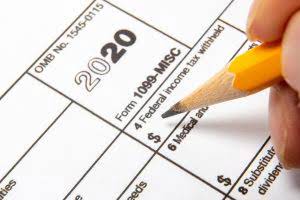Contra Accounts: Definition, Types, Example The Motley Fool

Accruing tax liabilities in accounting involves recognizing and recording taxes that a company owes but has not yet paid. This is important for accurate financial contra expense meaning reporting and compliance with… The Allowance for Doubtful Accounts is used to track the estimated bad debts a company my incur without impacting the balance in its related account, Accounts Receivable.
Is a Contra Account a Debit or Credit?
The difference between an asset’s balance and the contra account asset balance is the book value. Last, for contra revenue accounts there are sales discounts, sales allowances, or sales returns. These contra revenue accounts tend to have a debit balance and are used to calculate net sales. The contra revenue account is a reduction from gross revenue, which results in net revenue.

The Contra Liability Account
Contra asset accounts are presented on the balance sheet as reductions from the asset accounts they relate to. They typically appear just below the related asset, with their credit balances reducing the total value of the assets, showing the net amount that’s carried on the books. This presentation separates them from positive asset balances for clear visibility of the adjustments. To properly account for this scenario in their books, the company must record the gross sales figure (which is the total sales revenue) and the value of the discount on early payments.
List of Contra Accounts
The purpose of the Sales Returns account is to track the reduction in the value of the revenue while preserving the original amount of sales revenue. The purpose of the Owner’s Withdrawal account is to track the amounts taken out of the business without impacting the balance of the original equity account. They are crucial for compliance with generally accepted accounting principles (GAAP) and international financial reporting standards (IFRS).

Do Contra Accounts Have Debit or Credit Balances?

If the company withholds $2,000 from its employees’ wages to pay part of the cost of the insurance, the company will credit its contra expense account 4211 Employee Withholdings for Health Ins. Whereas assets normally have positive debit balances, contra assets, though still reported along with other assets, have an opposite type of natural balance. Accountants use contra accounts rather than reduce the value of the original account directly to keep financial accounting records clean. If a contra account is not used, it can be difficult to determine historical costs, which can make tax preparation more difficult and time-consuming. As contra entries affect both cash and bank accounts, you must enter the details accurately.
- Contra liabilities reduce liability accounts and carry a debit balance.
- Contra entries make it possible to track financial records involving cash and bank accounts.
- The contra account accounting reduces the total number of outstanding shares.
- This general structure can be applied across all contra types, so if the parent account has a credit, the contra account will have a debit.
- And why stop at just theory when you can apply what you’ve learned using premium templates?
- In double entry bookkeeping terms, a contra expense account refers to an account which is offset against an expense account.
What is the purpose of contra entry?
Contra-entry transactions happen between comparable accounts or using cash related to bank accounts. Revenue is shown on the income statement as a credit, it is the amount of revenue a business earns in a period. It might be important for a business to track the full cost of sales less contras to see the full picture. Of that amount, it is estimated that 1% of that amount will become bad debt at some point in the future. This means that the $85,000 balance is overstated compared to its real value. At this point, it isn’t known which accounts will become uncollectible so the Accounts Receivable balance isn’t adjusted.
- Contra equity accounts, therefore, act as a ledger for corporate strategy, impacting how the worth of a company is perceived from the outside.
- It can help businesses see the complete picture of their income and expenses.
- She founded Business Accounting Basics, where she provides free advice and resources to small businesses.
- It could be growing with bad accounts, and cash flow will be affected.
- For starters, accounting software platforms like QuickBooks or Xero offer functionalities tailored to track these accounts precisely, complete with automated entries for common transactions like depreciation or returns.
- The expense account uses its debit balance to reduce the revenue account’s credit balance.
- They typically appear just below the related asset, with their credit balances reducing the total value of the assets, showing the net amount that’s carried on the books.

To account for depletion, an Accumulated Depletion account is created so that it can serve as a contra account for the parent Fixed Asset account. By creating Accumulated Depletion account, companies can reflect the reduction of the natural resource asset and the overall depletion costs in a more accurate petty cash way. By properly managing depletion accounting, companies in these industries can better track and allocate the costs and value of their natural resources. This also ensures accurate financial statements, which is essential for meeting regulatory requirements and maintaining the trust of stakeholders. Assume that a company uses a contra expense account to record the amounts that employees paid toward the company’s health insurance costs. For instance, the company might debit its expense account 4210 Employee Health Insurance Expense when recording the insurance company’s invoice of $10,000.

In finance, a contra liability account is one that is debited for the explicit purpose of offsetting a credit to another liability account. In other words, the contra liability account is used to adjust the book value of an asset or liability. The contra liability account is less common than the contra asset account. An example of a contra liability account is the bond discount account, which offsets the bond payable account. A contra liability account is not classified as a liability, since it does not represent a future obligation. This means that entries recorded on the left side of the T-account will increase the asset balance and entries recorded on the right side will decrease it.

Commenti recenti